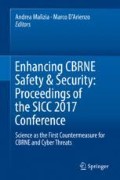Abstract
Since the beginning of space colonization, the number of space objects in orbit around the Earth has increased exponentially. It is currently estimated that around 15,000 satellites or other types of space vehicles are orbiting from the lower (LEO or above the stratosphere up to 10,000 km from Earth) to the higher (GEO or more than 10,000 km from Earth) orbital planes, for a total mass of more than 5000 tons. Consequently, uncontrolled space “debris” is produced for a total of 150 million pieces, from submillimetric items (propellant dust, paint flakes) to golf ball sizes and above (20,000). Besides the risks of collision with flying space vehicles, there is now growing concern for Earth impacts, since debris, by definition, is uncontrolled and may survive atmospherical re-entry friction falling almost anywhere when eventually reattracted by gravity. US NASA and NORAD statistics account for almost 17,000 large and small debris that have fallen until 2000, and 1 piece of debris a day is falling as a current average. This study aims at describing the framework for damage liability according to the International Treaty on Outer Space and its accessory protocols, giving an overview of the cases happened so far and the outlook for the future, together with examples of insurance models for damage coverage and mitigation systems (route diagnostics, radar surveillance, onboard protection, etc.).
Access this chapter
Tax calculation will be finalised at checkout
Purchases are for personal use only
Notes
- 1.
See ESA definition on www.esa.it Our Activities/Operations/Space Debris, 2017.
- 2.
By international standards, small satellites are in turn divided into ranges according to their weight: minisatellites < 1000 kg, microsatellites < 100, nanosatellites < 10, picosatellites < 1, and femto-satellites.
References
Mortillaro, N.: Space Debris: How Dangerous is it to People on Earth. http://www.globalnews.ca (2014)
Kessler, D.J.: KesCollisional cascading: the limits of population growth in low earth orbit. Adv. Space Res. J. 11(12), 63–66 (1991)
Menshikov, V., Perminov, A., Urlichich, Y.: Other global risks and threats in space and from outer space. In: Global Aerospace Monitoring and Management, pp. 201–214. Springer, New York (2012)
Various: Space junk, by the numbers. http://www.cbc.ca (2013)
Various: Space Debris Mitigation. Space Safety Magazine, Vienna (2017)
Jakhu, R.: UNCOPUOS and IADC space debris mitigation guidelines. In: Routledge Handbook of Space Law, p. 77. Routledge, New York (2017)
Harding, G.: The tragedy of commons. Science. 162(3859), 1243–1248 (1968)
Blum, S.: The Space Tourism Timeline. http://www.inverse.com (2015)
Emanuelli, M., Lips, T.: Risk to aircraft from space vehicles debris. Un Copuos, USA (2015)
ESA: SSA Programme Overview. http://www.esa.int (2017)
Sorge, M., Vojtek, M.E.: Space Debris Mitigation Policy. http://www.aerospace.org (2015)
VanZijl, J.: Space Debris Hit the ISS. http://www.thescienceexplorer.com (2016)
Pulvarova, T.: Meet the Space Custodians: Debris Cleanup Plans Emerge. http://www.space.com (2017)
Kunstadter, C.: Space Insurance Update. World Space Risk Forum (2016)
Sciortino, G.P.: New insurance models evolve with the development of commercial space economy. In: IAF Adelaide 2017 Technical Papers. International Astronautical Federation IAF, Paris (2017)
Emanuelli, M.: Space Debris and Meteorite Forecast. Space Safety Magazine, Vienna (2014)
Author information
Authors and Affiliations
Corresponding author
Editor information
Editors and Affiliations
Rights and permissions
Copyright information
© 2018 Springer International Publishing AG, part of Springer Nature
About this paper
Cite this paper
Bergamini, E., Jacobone, F., Morea, D., Sciortino, G.P. (2018). The Increasing Risk of Space Debris Impact on Earth: Case Studies, Potential Damages, International Liability Framework and Management Systems. In: Malizia, A., D'Arienzo, M. (eds) Enhancing CBRNE Safety & Security: Proceedings of the SICC 2017 Conference. Springer, Cham. https://doi.org/10.1007/978-3-319-91791-7_31
Download citation
DOI: https://doi.org/10.1007/978-3-319-91791-7_31
Published:
Publisher Name: Springer, Cham
Print ISBN: 978-3-319-91790-0
Online ISBN: 978-3-319-91791-7
eBook Packages: Physics and AstronomyPhysics and Astronomy (R0)

